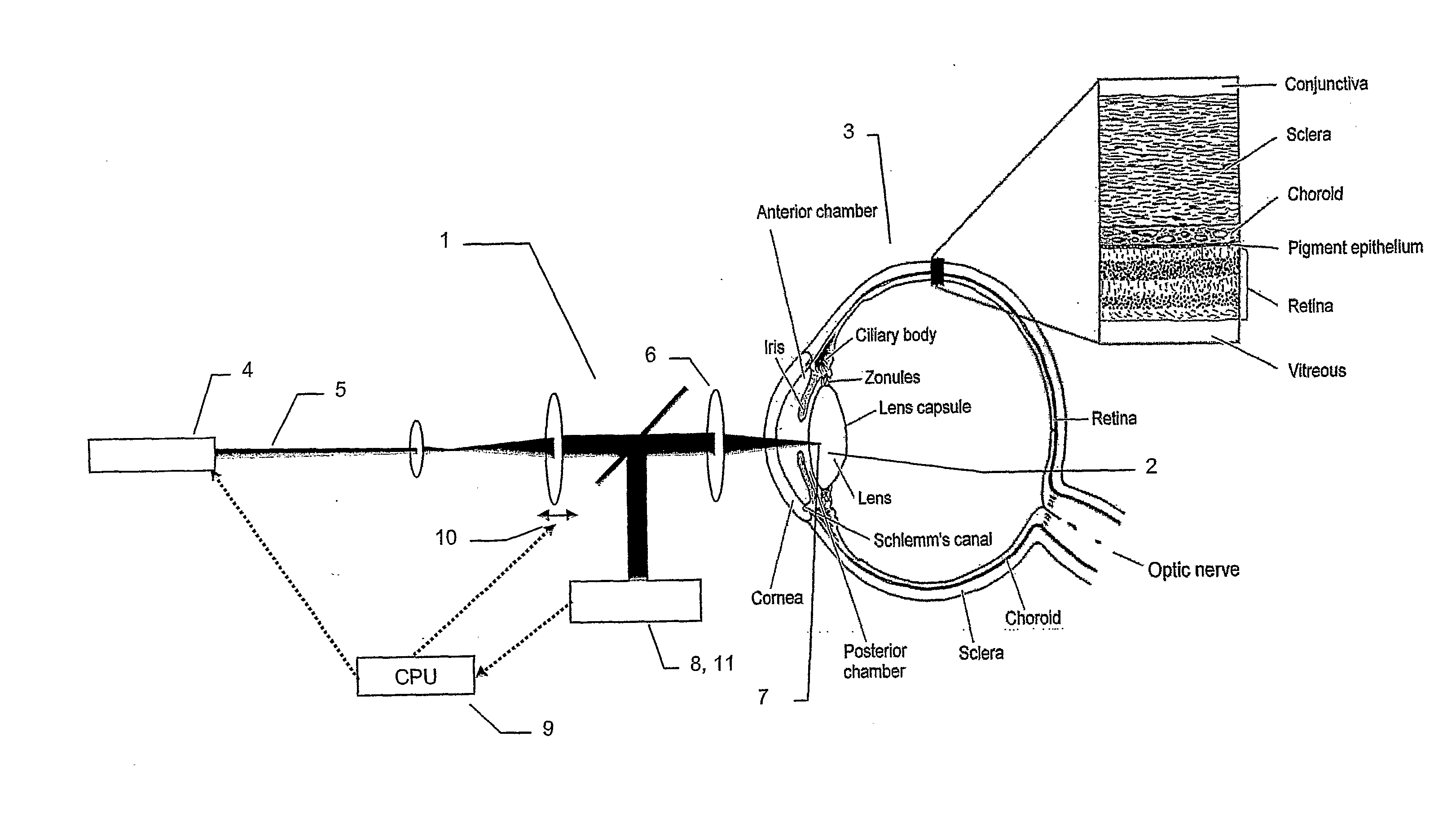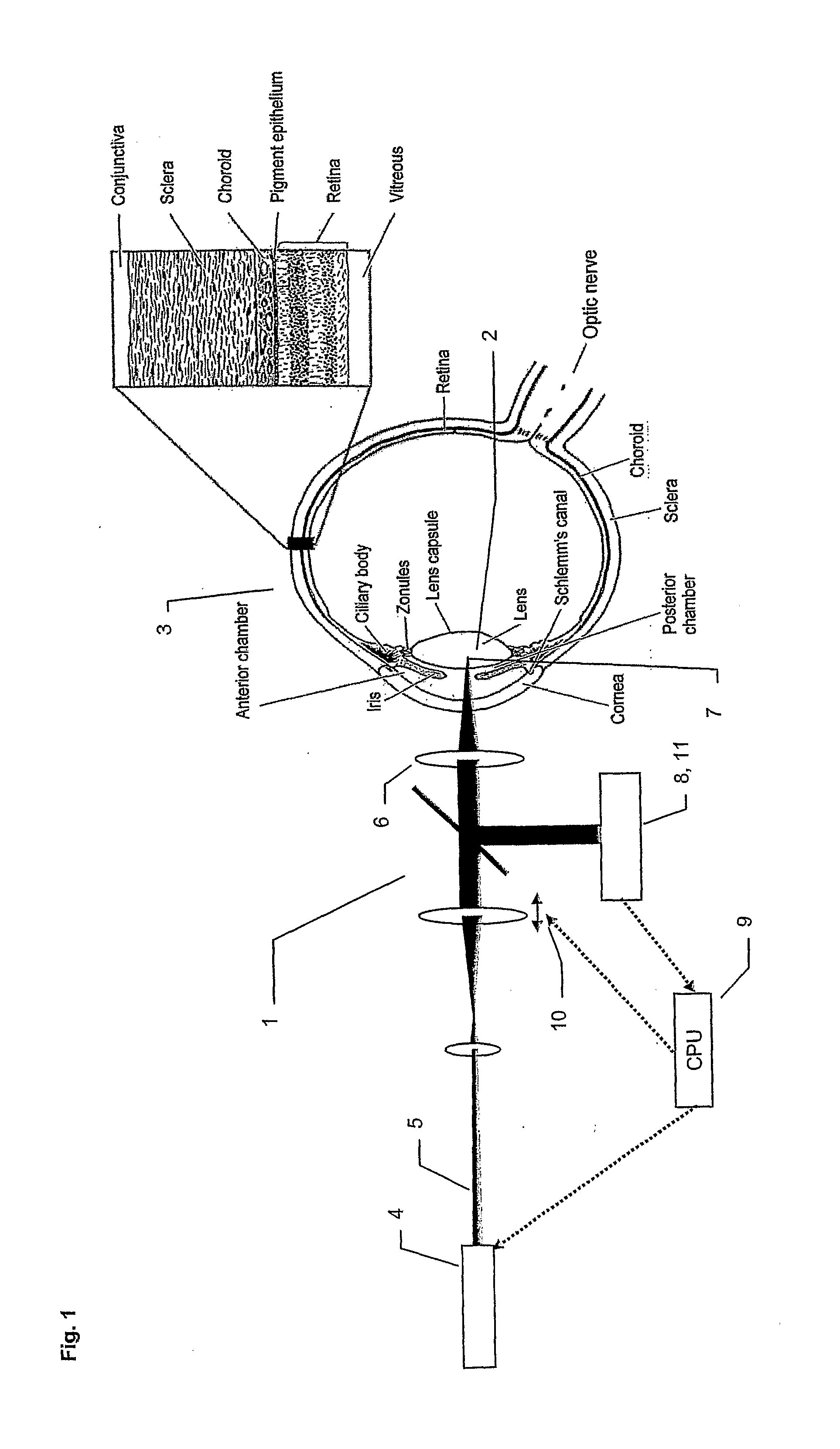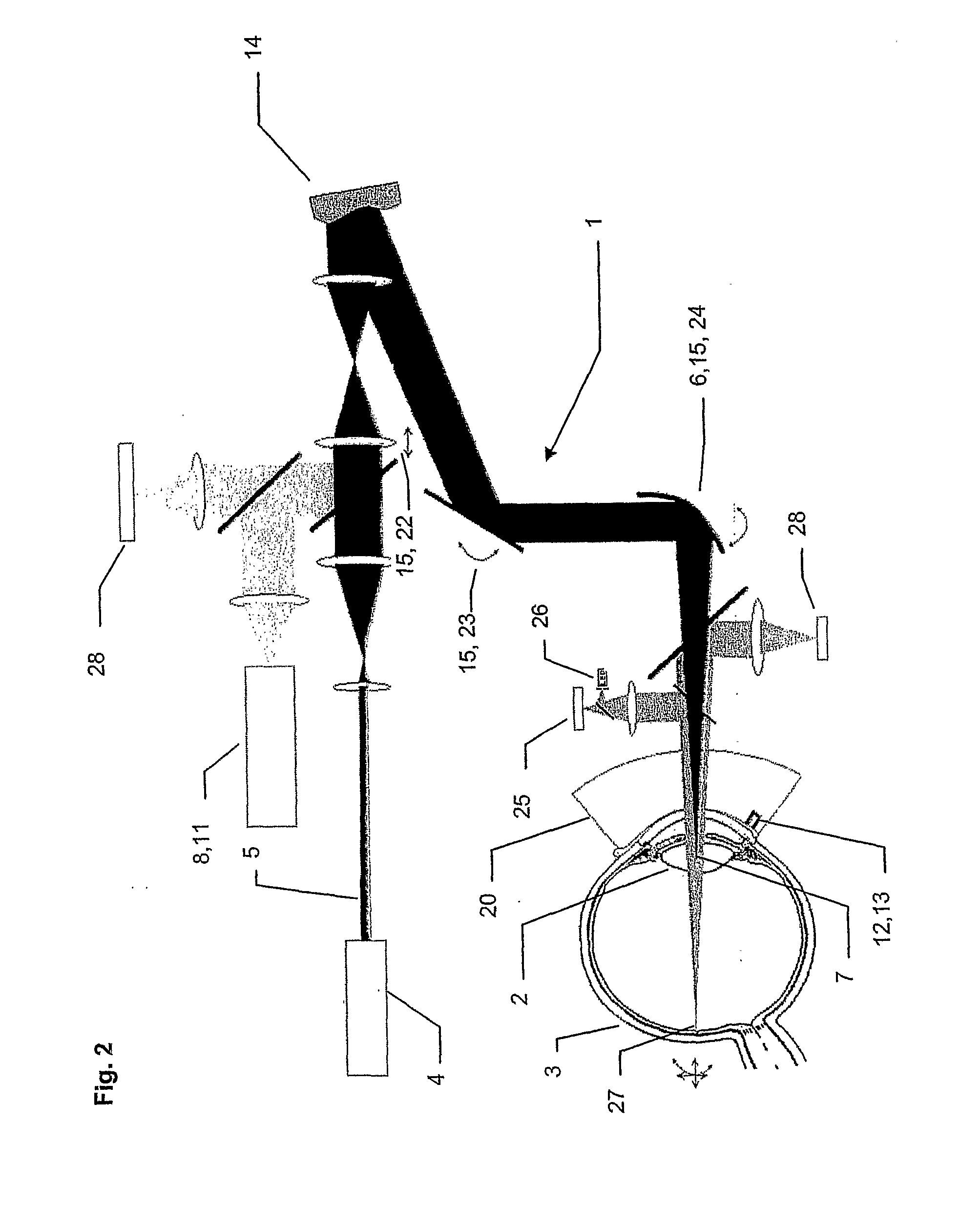Method and apparatus for non-or minimally disruptive photomanipulation of an eye
- Summary
- Abstract
- Description
- Claims
- Application Information
AI Technical Summary
Benefits of technology
Problems solved by technology
Method used
Image
Examples
examples
[0116]The following example provides further details of a system according to the invention such as shown in FIG. 1. The present example a system for lens phototherapy system uses one or more sources of light to aim and photomanipulate a selected volume of the lens of the human or animal eye. A specific embodiment of the invention uses an 800 nm titanium-sapphire laser at 275 kHz repetition rate, 238 femtossecond pulse duration, pulse energy 0.04 μJ, peak power 0.18 MW, and transverse target area radius of 10-200 μm. After acquiring a target area in the lens by the using of classical imaging optics, which may include slit-beam illumination and / or Scheimpflug real-time photography (not shown), a laser pulse or pulse train is applied in incremental energy steps to arouse a succession of events in the target volume, the nature of these events being detectable by the optical signature recorded by the spectrometer. These events include but are not limited to backscatter, fluorescence, Ra...
PUM
 Login to View More
Login to View More Abstract
Description
Claims
Application Information
 Login to View More
Login to View More - Generate Ideas
- Intellectual Property
- Life Sciences
- Materials
- Tech Scout
- Unparalleled Data Quality
- Higher Quality Content
- 60% Fewer Hallucinations
Browse by: Latest US Patents, China's latest patents, Technical Efficacy Thesaurus, Application Domain, Technology Topic, Popular Technical Reports.
© 2025 PatSnap. All rights reserved.Legal|Privacy policy|Modern Slavery Act Transparency Statement|Sitemap|About US| Contact US: help@patsnap.com



